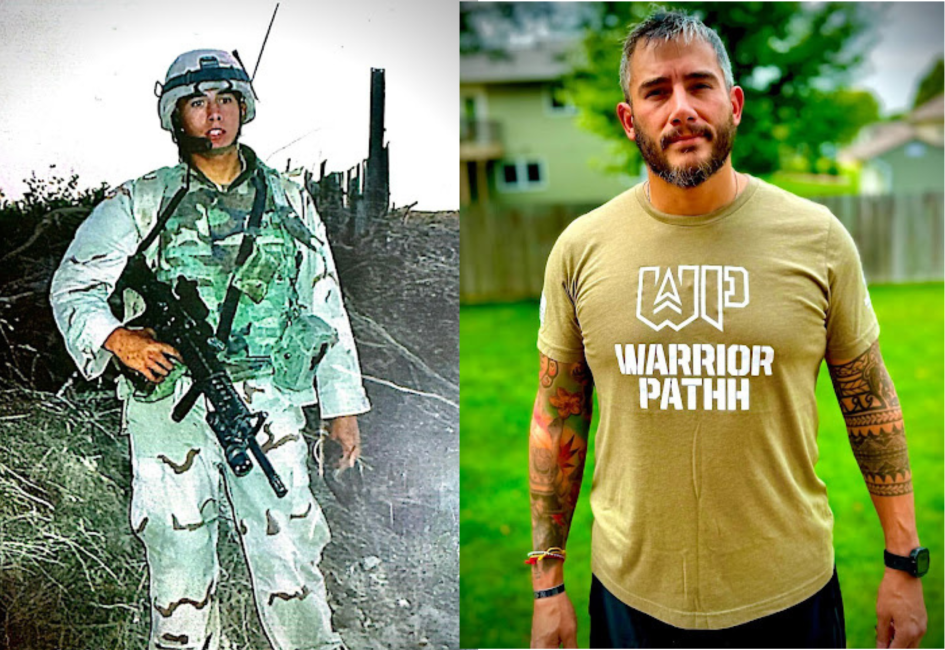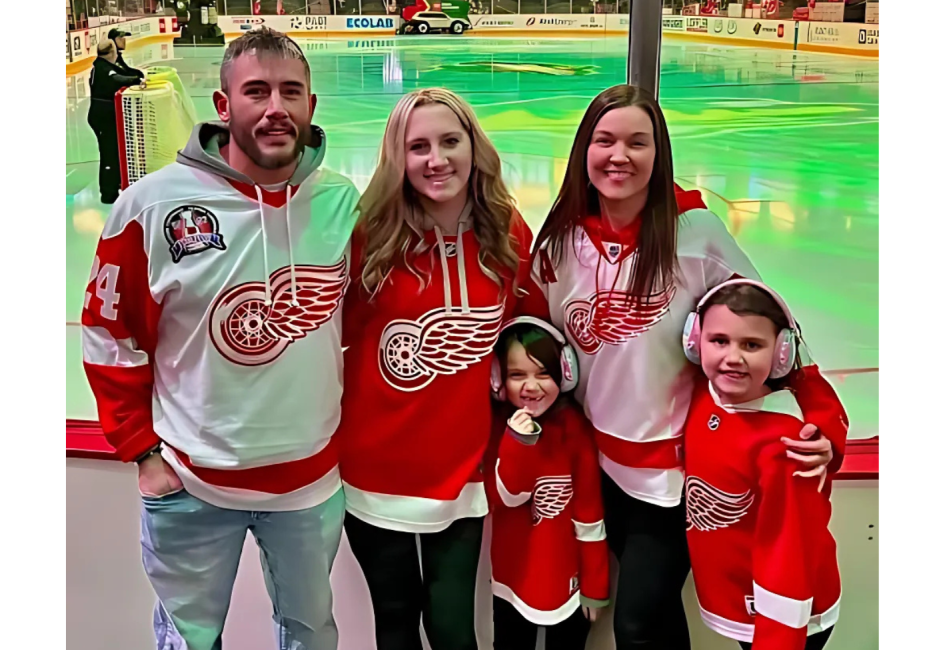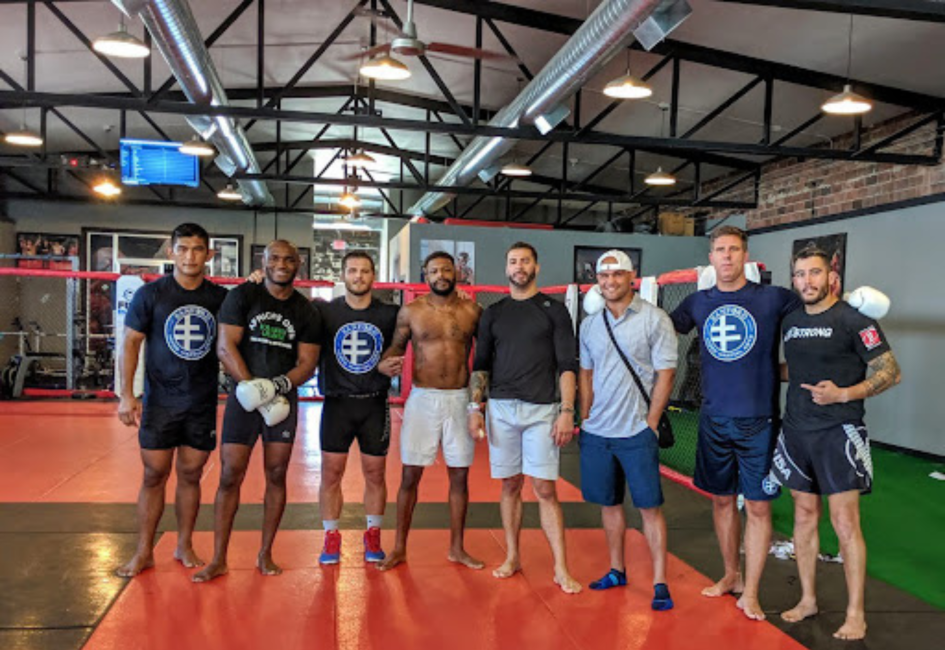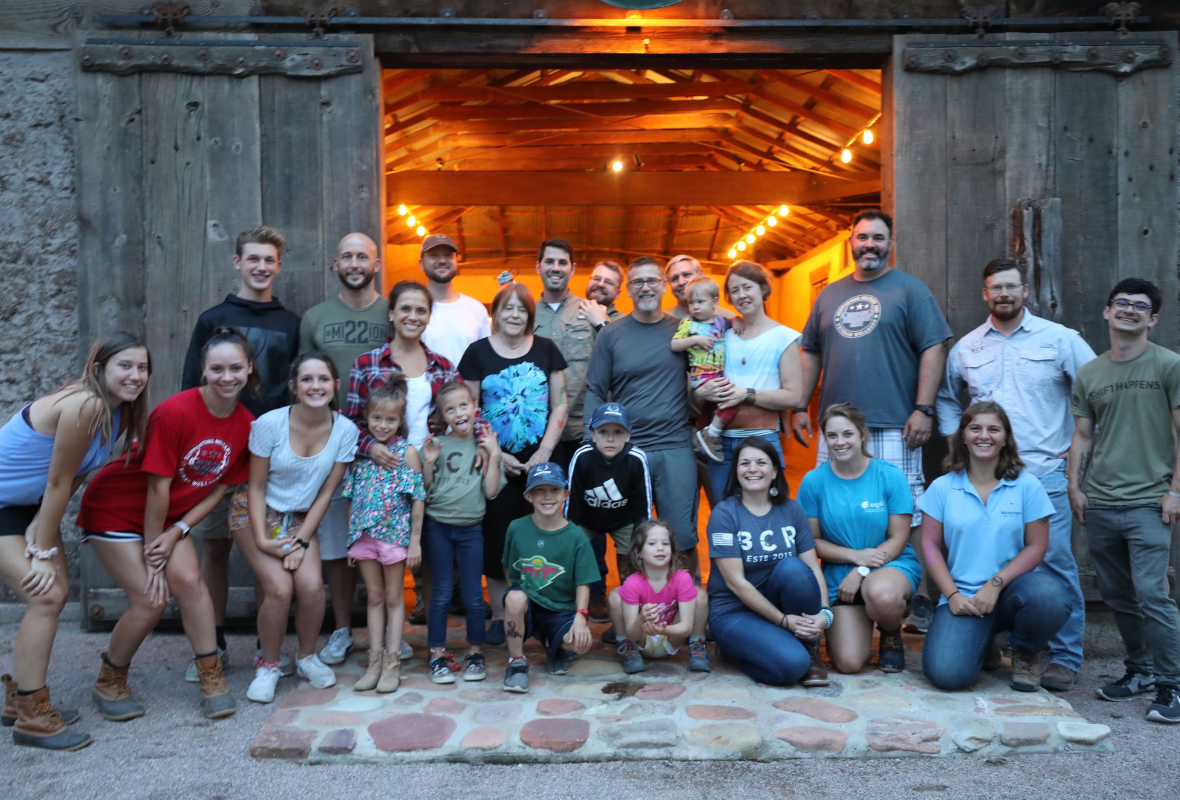Ian Ricci: The Will to Want


There’s an inherent bravery that comes with the vulnerability of sharing your story with others.
It’s one thing to live it. To face the real risk of danger on the battlefield. To feel the sting of sand on your face and the weight of a weapon in your hand and still take the next step forward.
It’s one thing to live your story. But to share it? Openly, publicly, unabashedly? That takes courage all its own. And Ian Ricci has done both.
Looking back, it all started with a wedding.
It was December 2001, and Ian was a college student and soccer star who was celebrating a close friend’s wedding near his campus in Iowa. During the festivities, he met the bride’s brother, Jay, a Green Beret fresh off a deployment to Afghanistan. Only three months removed from the World Trade Center attacks, he was welcomed home as a hero.
“Jay was, understandably, the star of the show,” Ian explained. “I was immediately drawn to him, and before the weekend was over, I stopped him and asked, ‘How can I be like you?’”
Seven months later, Ian returned home from college, walked into his local recruitment office, and joined the United States Army. One step closer to Jay status.
The next few months flew by in a blur of training, shaved heads, and combat boots. By that spring, Ian was standing in Iraq.
“I was an infantryman and a good one at that,” said Ian. “But it felt like an out-of-body experience. It had only been a few months since I was enrolled in college, and it was surreal to be deployed.”
At first, he was filled with confidence. Ian’s unit took no casualties and had no significant issues during his four-month tour.
When he returned home, the wave of public admiration and respect was awe-inspiring. People cheered and applauded when he walked through the airport. Strangers covered his tab at bars and restaurants. He had, for lack of a better word, swagger.
That’s what made the stark reality of his next deployment so difficult to stomach.
Ian returned to Iraq in September 2003 to a much different environment. The determination, skill, and talent were still there, but something had changed.
“Our unit had a big encounter on Halloween night that year,” he explained. “We went to the city and were looking for a guy with a wooden leg – I’ll never forget that specific detail – and it was my first sense of real combat. It didn’t feel like an out-of-body experience anymore. It felt like, ‘Oh sh-t.’”
Part of Ian’s role on the team was to drive a vehicle with Staff Sergeant Joe Dunigan and Specialist Chris Hill, all members of the 1st Battalion, 16th Infantry Brigade, 1st Infantry Division based at Fort Riley, Kansas.
They became good friends, and both Hill and Dunigan were like older brothers to Ian. They watched out for him and each other. By early March, they were running missions, 24 hours on, and 24 hours off.
“I was lying in a cot watching ‘Young Frankenstein’ on my DVD player,” Ian recalled. “Staff Sergeant Dunigan came in and started rounding us all up. We headed into town as the lead vehicle of a convoy and were maybe 15-20 minutes into the ride when Dunigan started giving Hill a hard time for breaking his water bottle. The next thing I remember was the explosion.”
A remote-controlled bomb detonated, killing Hill and Dunigan, and wounding Ian.
The moments after the explosion were a blur of adrenaline and chaos. Blood was everywhere. Ian, dazed and severely wounded, clung to consciousness with a single mantra: “Don’t go to sleep. Don’t go to sleep.”
Rounds were still going off around him. Somehow, he clawed his way out of the vehicle and returned fire, though he was woozy and still losing blood.
Miraculously, he survived.
Ian was rushed to a hospital in Baghdad, where he spent five days recovering from his injuries from the blast. He thought he’d be sent home, but instead, he was sent back to his unit. His commander, visibly emotional, hadn’t expected to see him again.
Ian stayed in Iraq for several more months, through grueling missions and the daily tension of war, before finally returning home sometime between Thanksgiving and Christmas of 2004. But coming home didn’t feel like an end to the battle—it was only the beginning of a new one.
Life after the military wasn’t the triumphant homecoming Ian had imagined or experienced after his first deployment. His marriage dissolved, and he transitioned out of the Army in 2008, returning to South Dakota with no clear path forward. For months, he slept in his truck and on friends’ couches, piecing his life together one small step at a time.

Ian eventually found work as a VA officer, helping other veterans navigate the complicated benefits system. His meticulous nature and drive to serve others made him good at the job.
But underneath it all, Ian was unraveling. A drinking habit he’d picked up began to spiral, and by 2013, his boss confronted him with an ultimatum: resign or be terminated. Ian resigned, but the loss sent him further into a dark spiral.
What followed was a blur of warehouse shifts, depression, and an overwhelming sense that his best days were behind him. The hero’s welcome he’d once received felt like a distant memory.
By the time Ian heard about the Boulder Crest Foundation, he wasn’t seeking help. He had already made up his mind. He prepaid his mortgage, wrote a letter to his service officer ensuring the VA would take care of his family, and made plans to end his life.
His plan was methodical: fly to Arizona for the retreat, take pills during his layover in Chicago, and spare his family from finding him at home. “But when we arrived in Chicago, I got scared and decided to push it off,” Ian said.
By the time he arrived at Boulder Crest’s location in Arizona, Ian was hollow. He went through the motions of the Warrior PATHH program without any real intention of engaging. He didn’t take notes, didn’t speak up, and didn’t participate. For Ian, this was just a final stop before the end.
Then came the turning point. During one exercise, participants were asked to share a plan they’d developed throughout the program. Ian stared down at his hands and the blank sheet of paper he was holding and broke down. Tears streamed down his face as he admitted to the group that he had no plan because he never intended to go home.
At that moment, Greg, one of the program guides, wrapped Ian in a hug. When Ian tried to let go, Greg held on tighter. “I still get goosebumps thinking of it,” Ian recalled. Josh Goldberg, another guide and now Boulder Crest’s CEO, handed Ian a note that read: “You can change lives if you want. I just need you to want.”
Something shifted. Ian began to engage, to process his pain, to believe that maybe there was a way forward.
When he got home, his family was unaware of how close they had come to losing him.
“I did not disclose anything to my family until several months later,” he explained. “It was challenging but incredibly necessary to move on.”
Over time, they began to heal – together.
Ian went on to complete Warrior PATHH as a fully engaged participant. Slowly, he carefully began to pick up the pieces of his life and build a future full of purpose and service. The more he gave back, the more he healed.
“At the time, Warrior PATHH was an 18-month course, so I continued to stay engaged in the curriculum and team meetings,” Ian said. “I continued to work a job at a warehouse, coach at my gym, and even decided to train as an EMT so I could work in an ambulance and serve again somehow.”
“I stayed engaged with the program via team calls and group check-in meetings,” he continued.
“In September 2019, after I completed the full 18-month program, Greg (my former guide and Vice President of Places & Programs at Boulder Crest) contacted me to discuss my working as a ‘Mobile Guide’ on the new traveling Mobile Training Team. This meant I could stay in South Dakota with my family, continue to coach at my gym, travel with a team, and still serve others.”
Ian continued to learn, grow and develop as a program participant turned leader. Later, he became the Director of Warrior PATHH, the very program that saved his life, leading more than 70 Warrior PATHH classes and forming bonds with every single participant. “I can name at least one person from each class,” he said.
Today, Ian’s life is full of purpose. He is an advocate, a mentor, and a coach. He pours himself into Muay Thai and kickboxing, helping athletes of all ages and backgrounds discover their strengths. He meditates daily, finding peace and clarity in the present moment.

Through Boulder Crest Foundation, Ian has not only rebuilt his life but also found a way to help others do the same.
A decade ago, a blank page represented the end for Ian—a symbol of everything he believed would never come to pass. Today, a blank page is something entirely different. It’s a doorway to the opportunities ahead, a reminder of the lives he can change through Warrior PATHH, through Muay Thai, or simply by sharing his story.
And when Ian needs a reminder of his impact and purpose, he only needs to reach in his pocket and read the words that shaped it all: “You can change lives if you want. I just need you to want.”
Warrior PATHH — Progressive and Alternative Training for Helping Heroes— provides the training you need to transform your struggle into strength and thrive in the aftermath of trauma. To learn more about the Warrior PATHH program or any of the opportunities available through the Boulder Crest Foundation, please click here.
Your support powers life-changing programs offered at no charge to veterans, military, first responders, and their families. With your help, our Warriors won't just survive — they'll thrive.

We have received your email sign-up. Please tell us more about yourself.